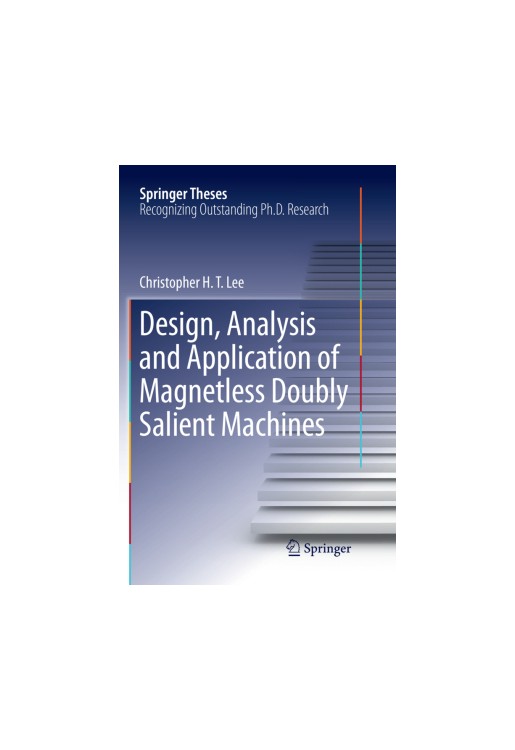


This thesis investigates the key characteristics of magnetless doubly salient machines, evaluates their design philosophies, and proposes new topologies for various applications. It discusses the background of and previous research on magnetless machines, while also outlining upcoming trends and potential future developments.
The thesis begins by presenting various torque-improving structures - namely the multi-tooth structure, the double-rotor (DR) structure, the axial-field (AF) structure, and the flux-reversal (FR) structure - for magnetless machines. It subsequently addresses the idea of merging the design philosophies of two different machines to form new dual-mode machines. Thanks to a reconfigured winding arrangement and controllable DC-field excitation, the proposed machines can further extend their operating range to meet the extreme demands of applications in electric vehicles and wind power generation. Lastly, the thesis employs the finite element method (FEM) tothoroughly analyze the proposed machines' key performance parameters and develops experimental setups to verify the proposed concepts.
Introduction.- Overview of magnetless doubly salient brushless machines.- Multi-tooth machines - Design and analysis.- Double-rotor machines - Design and analysis.- Proposed axial-field machine for range-extended electric vehicles.- Proposed flux-reversal dc-field machine for wind power generation.- Proposed dual-mode machine for wind power harvesting.- Proposed electronic-geared machine for electric vehicle applications.- Conclusion and recommendations.
check_circle
check_circle
